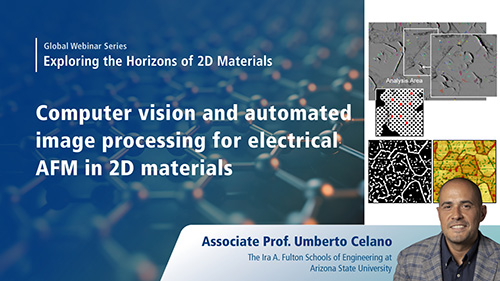
The first recipient of the 2025 Park AFM Scholarship in China is Dr. Minghui Xu from Professor Liang Qiao’s team at the School of Physics, University of Electronic Science and Technology of China. As the first author, Dr. Xu published the research titled "Robust Superconductivity in Infinite-Layer Nickelates" in the internationally renowned journal Advanced Science, where it was featured as a cover article. The study utilized the Park NX10 system.
1. Please summarize the research you do and explain why it is significant?
The key advantage of atomic force microscopy (AFM) in studying nickel-based superconducting thin films stems from its unique capability for multimodal analysis at the nanoscale. In our research, Park Systems’ AFM enables direct measurement of single-atom step heights in infinite-layer nickel-based superconductors. By comparing these measured values with the theoretical unit-cell height of the Ni-O planes, we can rigorously validate the interlayer stacking integrity of the films. Especially critical is that when the deviation of the detected step height from the theoretical value exceeds 0.05 nm, structural defects such as oxygen vacancy aggregation or lattice slip can be determined. The ability to analyze the surface structure with atomic-level precision provides direct experimental evidence for revealing the structure-property relationship of nickel-based superconducting films.
2. How might your research be used?
Real-time observation of atomic surface steps (e.g., SrTiO3 0.4 nm unit-cell steps) by Tapping Mode allows for precise monitoring of thin-film epitaxial growth patterns and surface roughness. These insights enable data-driven optimization of thin-film synthesis processes.
3. Why is the Park AFM important for your research?
Park Systems’ atomic force microscopes (AFMs) stand out as an ideal tool for this field of research, combining ultra-high resolution, multimodal measurement capabilities, surface potential mapping, and user-friendly data analysis features. These systems exhibit exceptional sensitivity to the surface morphology of single-crystal thin films, enabling precise capture of microstructural details. These capabilities provide critical guidance and support for advancing our understanding of film growth mechanisms and optimizing synthesis processes.
4. What features of Park AFM are the most beneficial and why?
Park AFM’s advanced imaging technology is one of the most invaluable tools in our research, offering ultra-high resolution at the nanoscale. This capability is essential for studying the surface structure of nickel-based superconducting thin films, where microscopic features, such as surface morphology, defect distribution, and grain boundaries, directly impact electrical and superconducting properties. By precisely imaging and quantifying film topography, Park AFM enables accurate assessment of film quality and uniformity while providing critical data to optimize synthesis processes. Additionally, its remarkable sensitivity detects subtle surface characteristics often overlooked by other techniques, revealing the microscopic mechanisms driving film performance.
More importantly, Park AFM supports various operational modes, significantly enhancing its versatility in materials science research. For example, Magnetic Force Microscopy (MFM) can be used to investigate the magnetic distribution within thin films, while Kelvin Probe Force Microscopy (KPFM) enables the detection of surface potential, providing insights into the electromagnetic properties of the films. Other modes, such as Conductive Atomic Force Microscopy (C-AFM) and Lateral Force Microscopy (LFM), facilitate the characterization of local conductivity and mechanical properties, allowing researchers to obtain multidimensional physical information in a single experiment. This multi-mode, integrated functionality greatly improves experimental efficiency, reduces errors from switching between instruments, and offers a more comprehensive perspective on material properties.
This multi-mode, integrated functionality allows us to capture multidimensional physical data in a single session, improving experimental efficiency and reducing errors associated with switching between instruments. It also offers a more holistic view of material properties, vital for comprehensive analysis.
In summary, Park AFM’s exceptional imaging resolution, multi-mode capabilities, and seamless experimental integration make it an ideal platform for exploring nickel-based superconducting thin films and other functional materials. It provides precise tools to uncover microstructural and physical properties while enhancing efficiency and advancing materials science research.




